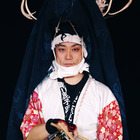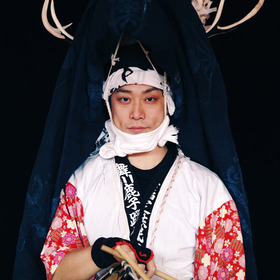2020, 311, Folk Performing Arts
Folk Performing Arts since the War
The Japan Folk Performing Arts Association Incorporated Foundation (Tokyo, hereinafter, JFPAA) for which I work, is an organization for traditional folk performing arts, such as Kagura and Shishimai, that are performed throughout Japan. It is a nationwide network organization comprising of individual members who include specialists in traditional arts, fans and researchers, which aims to contribute to the promotion and development of the culture of our country by promoting the preservation of local folk performing arts in the community through carrying out performances and research, and providing information and international exchange.
In order to "contribute to the promotion and development of the culture of our country" with folk performing arts, we have helped cultivate the land by accumulating wisdom and techniques, together with the offering of prayers by singing and dancing. These performances enable people to feel both astonishment and emotion, and they also incorporate a very enthusiastic artistic side, so that our children and grandchildren can live forever peacefully within the unique atmosphere of each local region in Japan. That is why it is no exaggeration to say that that folk performing arts have also played a part in creating a rich culture and life in Japan. It should in fact be natural that the folk performing arts should form the essential foundation of the cultural program for the Tokyo Olympic Games and Paralympic Games of 2020.
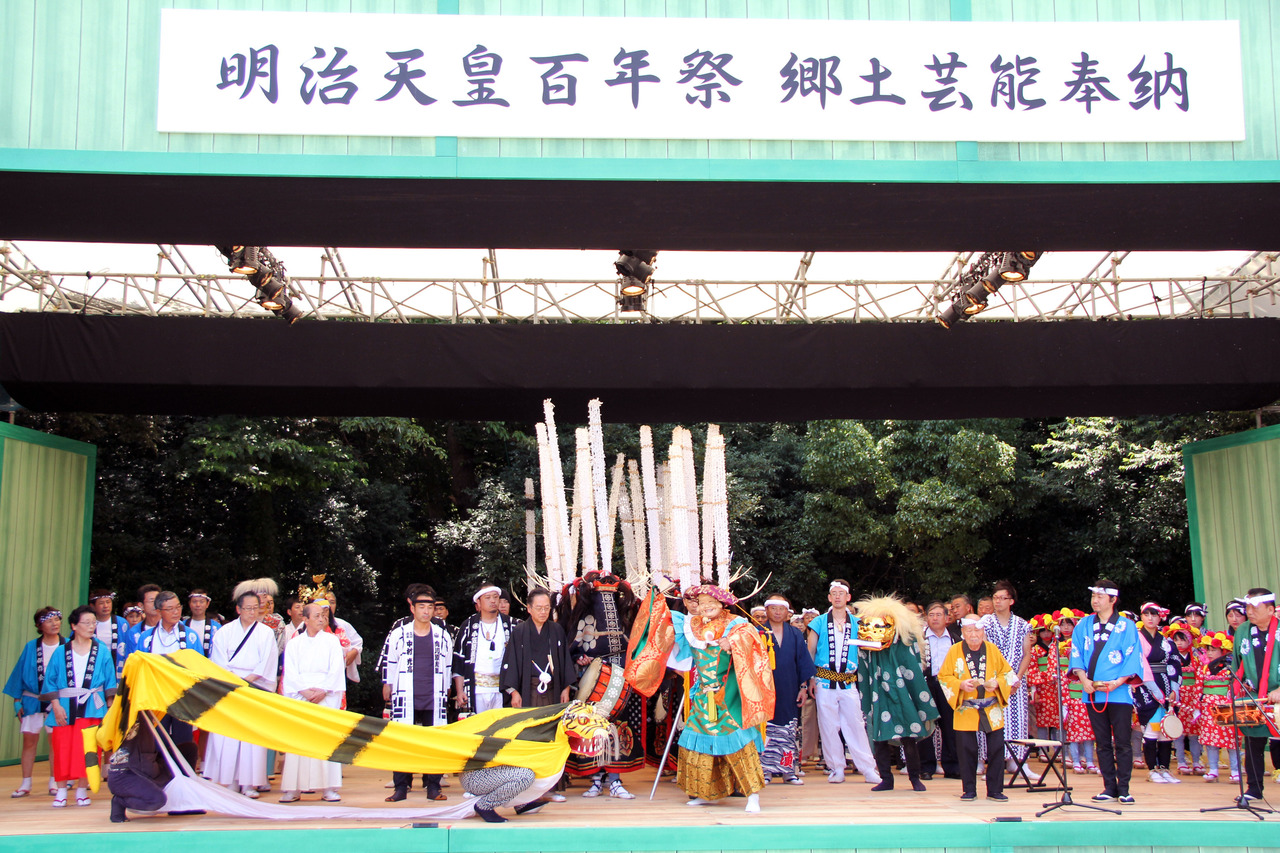
However, when it comes to the folk performing arts, people to tend to think of preconceived images such as "old-fashioned", "hard to understand", "don't know how to engage or participate in them", "something for old people", "goods for tourists" or "putting on a show". This way of perceiving the folk performing arts came about in relation to postwar reconstruction and the high economic growth triggered by Tokyo Olympic Games in 1964 and the Japan World Exposition held in Osaka in 1970. All of the local areas and cities in Japan, and other countries in Asia, as well, aimed to become materially rich like Tokyo or Osaka, with a fast outflow of people and talent.
As a result, the kind of culture that reflects the nature or a region, such as folk performing arts, as well as the wisdom and knowledge of the elderly that accompany it, are made light of, losing young people who could become leaders and the number of prominent and respected experienced performers who we can see decreased in number. The motivation to hand down traditions has reduced and their significance has become vague、neither the personnel nor the information were updated for decades, resulting in such traditions becoming distant from the Japanese way of life and culture.
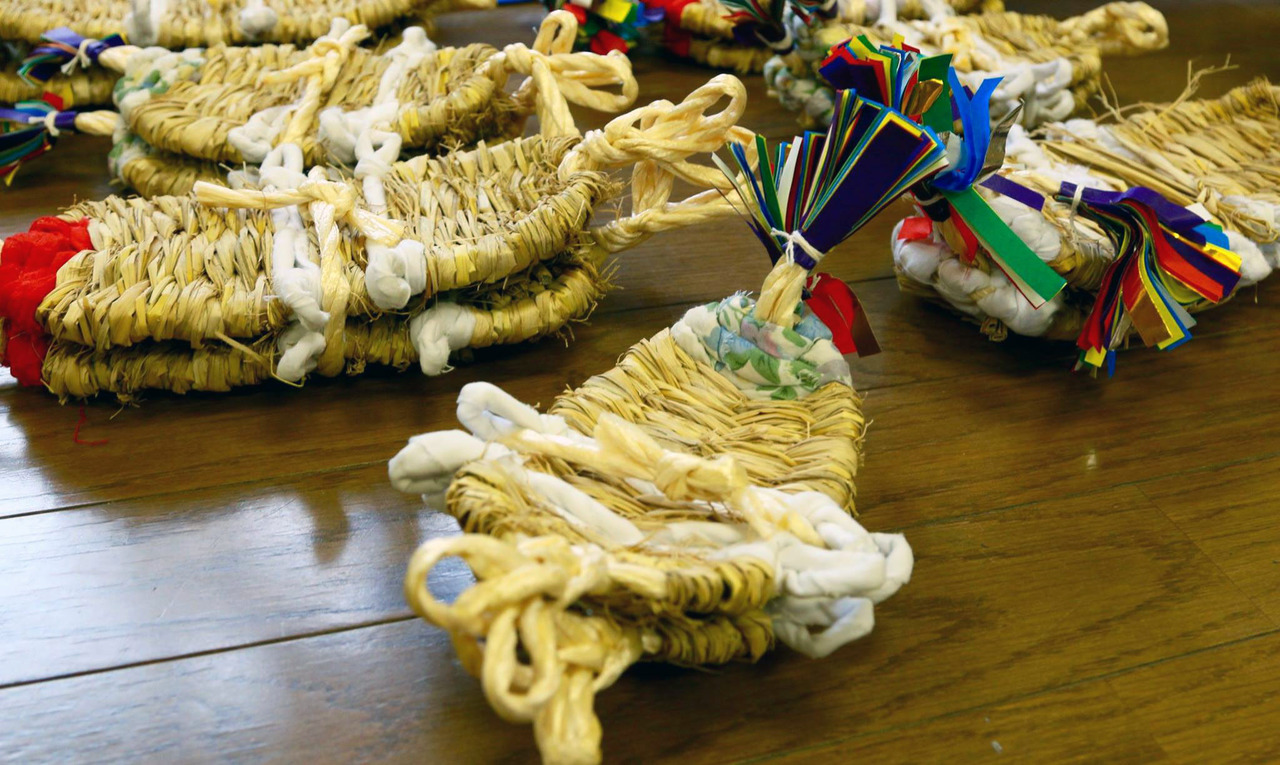
Provided by Tokyo Shishi-Odori
On the other hand, the power of a regional culture that consolidated the identity of each area in the folk performing arts and festivals was needed for the reconstruction of Japan that was struggling at the end of the war in 1945. In particular, after reconstruction had reached every corner of the country, in order to make the appearance of Japan impressive at the Japan World Exposition in Osaka which was held in the midst of high economic growth, the flamboyance of the diverse folk performing arts in each area and the vitality demonstrated were ideal. Festivals and performing arts gathered from all over the country for the event entitled "Japan Festival" and for 6 weeks performed one after another on the vast "Festival Plaza" stage. The "directors" of this space were the founders of arts in the whole country: stage directors, TV directors, choreographers, photographers and researchers in the performing arts. Within the limited space and time, the standard model of "how to show folk performing arts" was presented in an easy to understand and different way to the original to create an impact. Even now that method has not changed significantly. As a result, this greatly influences not only the appearance of the performing arts groups but also those connected with the stage and the audience and the merits and demerits of that are immeasurable. However, in order to prevent any misunderstanding, I have to say that not only the directors but also other experts and researchers in the folk performing arts formed a cohesive group and frequently visited the traditional performing groups and, precisely because they created a system together, even now there are many members from the time of the Japan World Exposition.
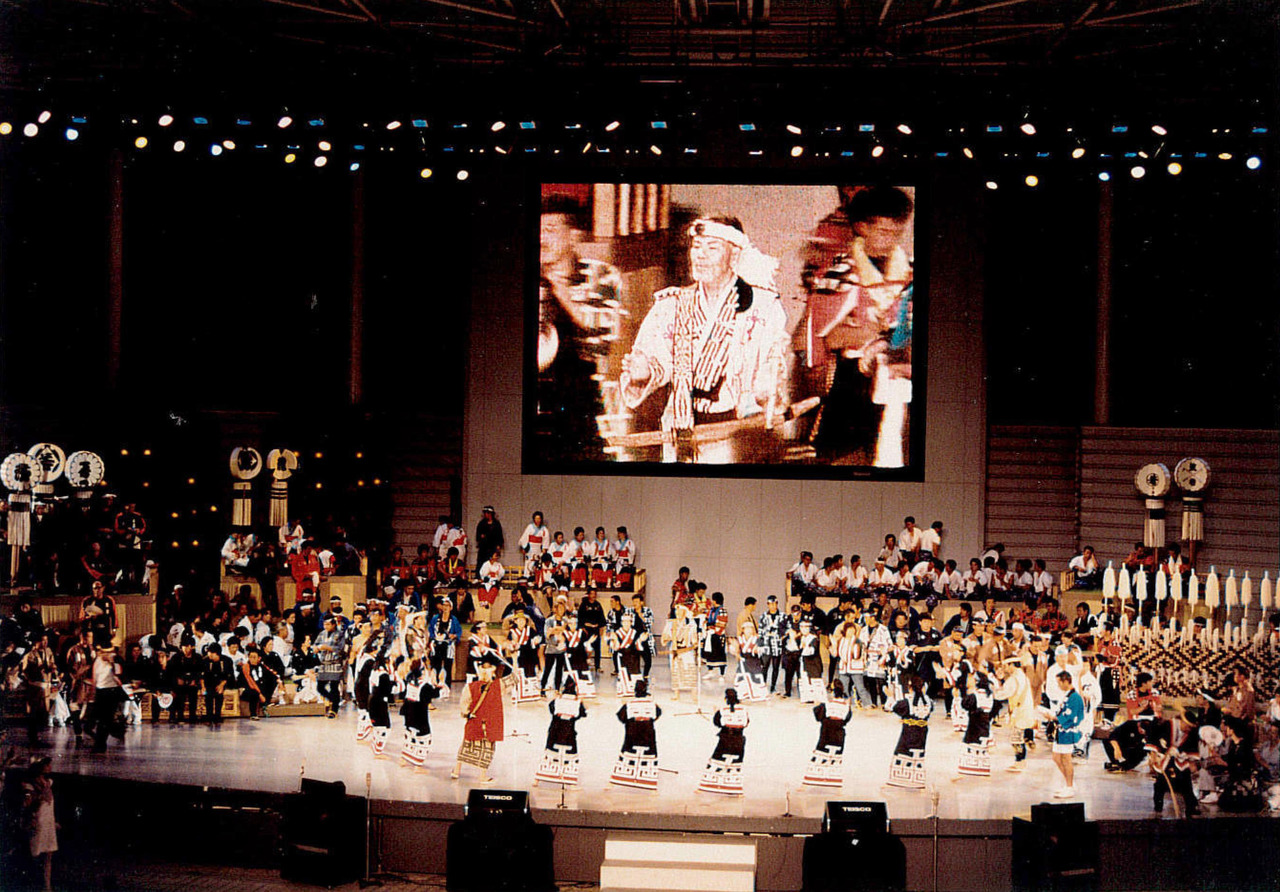
Provided by JFPAA
Even though the folk performing arts have continued to be tossed around by the reconstruction since the war and economic growth in this way, they have ceaselessly sustained themselves and are now receiving attention again.
Folk performing arts and festivals have been revived one after another in the disaster area of the Great East Japan Earthquake that occurred on March 11, 2011. The Tohoku region is said to be a treasure trove of folk performing arts and festivals and they have been the pillar for the local communities to be maintained. Enjoying a festival once a year is part of the lives of the residents and getting together for preparations and dance practice connects the generations and local areas. Residents who had got separated after the earthquake disaster gathered together again to hold the festival and it became a place where they could talk about the current situation and the future.
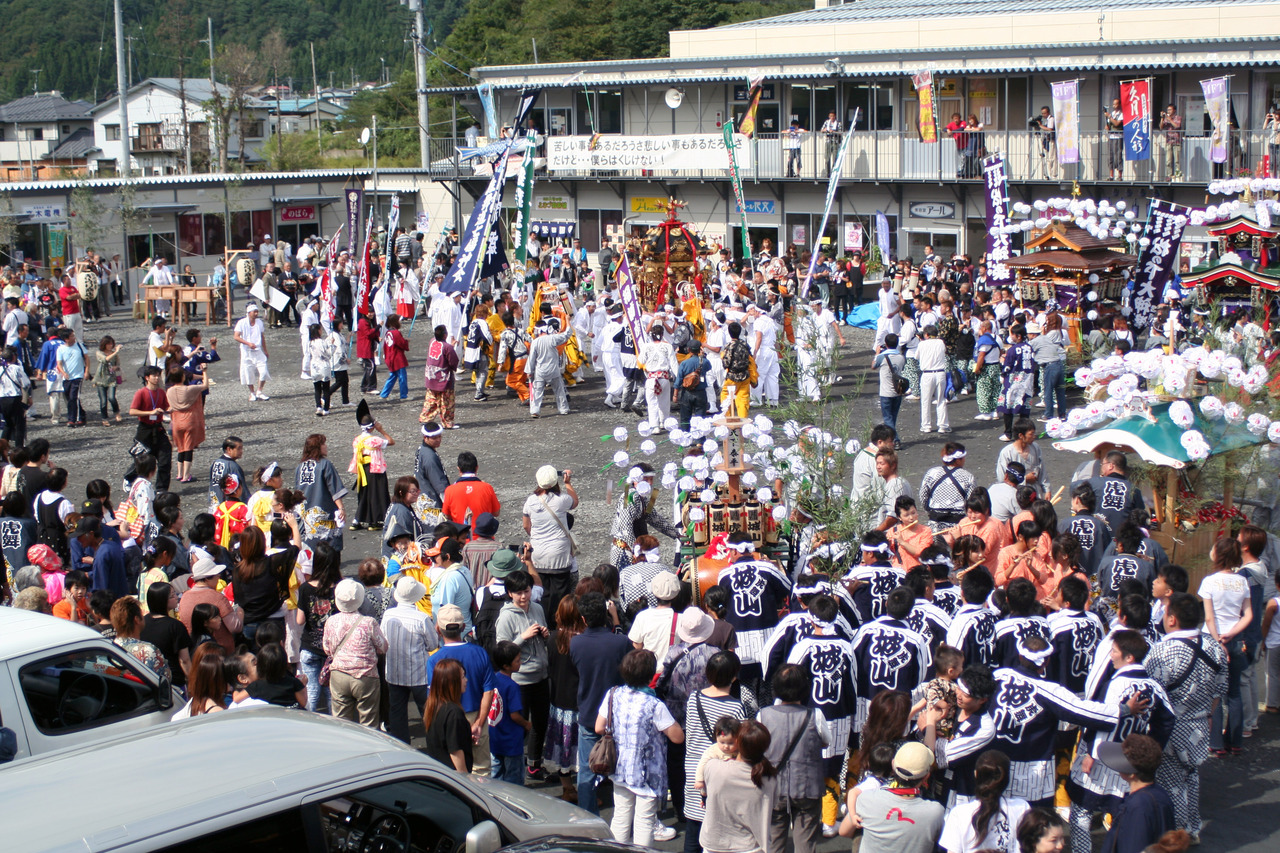
Provided by Takeshi Abe, Tohoku Institute of Filmed Cultural Properties
In addition, the resumption of other performing arts was seen soon after the earthquake disaster, such as the Iwate Nenbutsukenbai which is a performance with the aim of being a memorial service for departed souls during the Bon period, Shishi-Odori which is a tradition conveyed in Iwate and Miyagi and the Jangara-Nenbutsuodori in Fukushima. In the Tohoku region, the acts and scenes of performances mourning the spirits of the departed became a rather ordinary scene. So, having the extraordinary performances of mourning the victims who died in the earthquake disaster was a step for the people in Tohoku towards recovering their normal daily lives, as it was a necessity to do anything. These images were spread by various kinds of media and this resulted in the re-recognition by the Japanese of the significance of the performing arts, or in the recognition of Japanese culture that was not known to people in Japan or abroad.
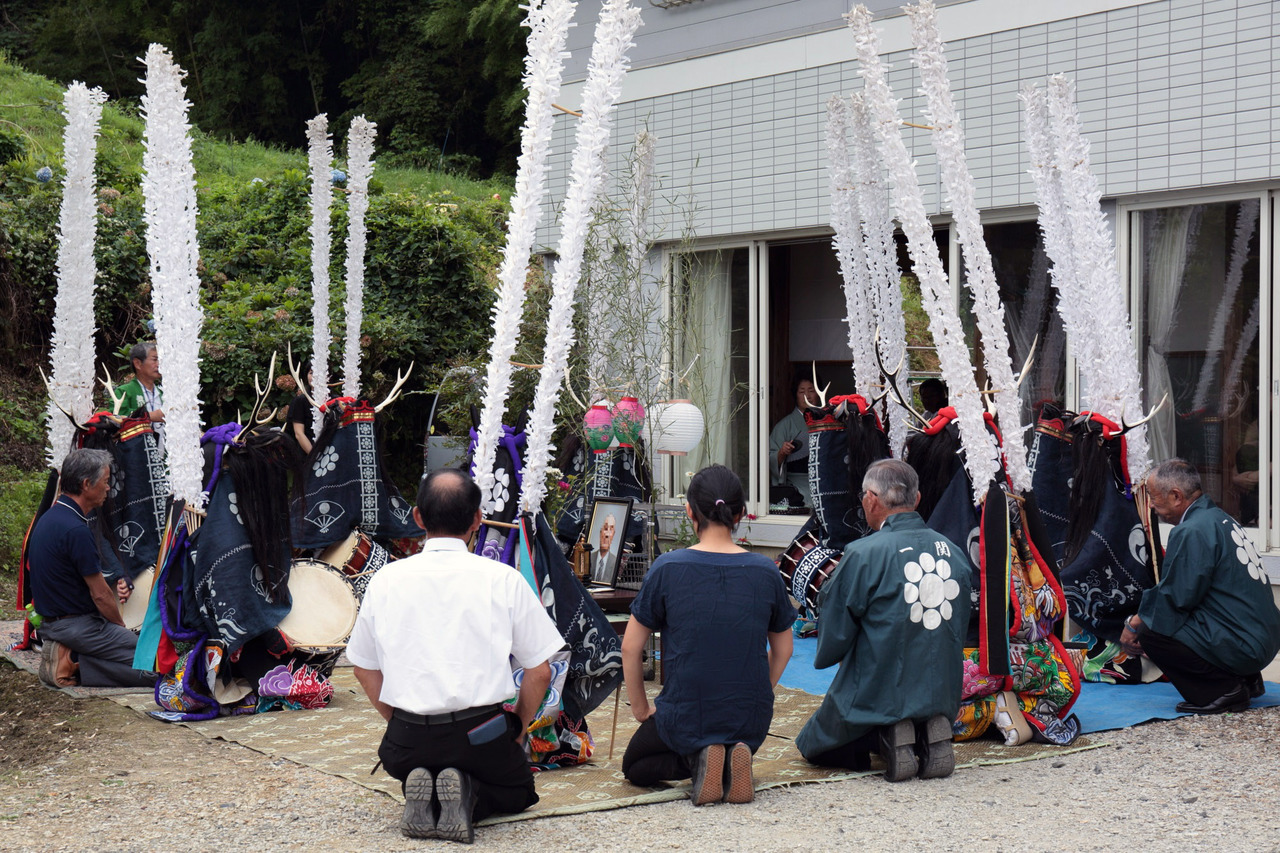
Scene of the August Bon Festival
Photograph by Yoko Ishii, Deer Photographer
In addition, people who had left the areas, such as the baby boom generation and the elderly and people from outside the areas who were completely unfamiliar with them, became involved with the local communities. It was then that the knowledge and ingenuity of the predecessors that were contained in the local resources, performance arts and festivals were rediscovered, and reignited the waning spirit and imagination of the residents and the elderly. The return and restoration of the local human resources and abilities that had just left the area until that time, began to be gradually carried out.
The folk performing arts after the earthquake disaster and the Tokyo Olympics
So, after the earthquake disaster an appeal was made for "Reconstruction Olympic Games" in the bid for the 2020 Olympic Games. The bid resembled the bids to host the previous Olympics and the Japan World Exposition which were during the movement from national crisis to reconstruction, but in 1964 and 1970 when Japan was starting to move forward as an economically and scientifically developed country overflowing with hopes and dreams. However, this time, with its national themes of the Great East Japan Earthquake and accompanying nuclear power accident, disasters that occurred one after the next, population decline, an ageing society and the return to local hometowns, Japan cannot, as a developed country facing challenges, put forward "reconstruction", "revitalization" and "appeal to overseas" in the same way as before.
According to the Tokyo Organising Committee of the Olympic and Paralympic Games, the aims of the "Tokyo 2020 Culture Olympiad" are "to revitalize local areas with the power of the cultural arts and, through promoting the participation of young people and fostering their creativity, to continue to convey the culture of Japan and the world to future generations after 2020 and beyond." From the awareness reached after the earthquake and the momentum of the Olympic Games, the relationship between Tokyo that is now coming to the end of its era as the focus of monopolar concentration, and the local regions, will be rethought and a vision that will enable a life with more vitality after 2020 is being forged from now on. Furthermore, residents feel encouraged by utilizing outside forces, such as tourists and for the older generation to proudly convey the identity of the area to the younger generation, regional culture such as the performing arts and festivals that are disseminated to each area have a high level of usefulness.
Now I would like to mention a case where the folk performing arts were taken up in the PR for the 2020 "Tokyo Olympics" during the Rio de Janeiro Olympics held last year (hereinafter, Rio). The event "TOHOKU & TOKYO in Rio" was held and this was one part of the leading projects by the Tokyo Metropolitan government to promote culture. It was suitable in order to convey the impression of the "Reconstruction Olympic Games", with the aim of rebuilding "Tokyo" and the Great East Japan Earthquake disaster area of "Tohoku", and showing appreciation to the world. Folk performing arts from Tokyo and Tohoku were performed at this event. Onikenbai (Oniyanagi Onikenbai from Kitakami City, Iwate prefecture) and Jangara-Nenbutsuodori (Iwaki Jangara Saishikai from Iwaki City, Fukushima prefecture) were dispatched from Tohoku and JFPAA was responsible for everything related to the production of the folk performing arts from Tohoku. The two organizations from Tohoku that were dispatched this time had a hard schedule of having to travel the day after finishing the Bon memorial service because these performances are held for spiritual memorial services, whether by chance or necessity. The appearance and performances of both of these groups are appealing and popular but I do not think that so many people know of their original purpose, especially people overseas. It goes without saying that we faced the difficulty of how to present the performances in the form of a kind spectacle under the name of the Reconstruction Olympic Games without revealing the original meaning of these performances, just as in the case of the Japan World Exposition in the past. However, with the festive atmosphere in Rio and the bright and cheerful nature of the people, the taiko drums and gongs used by both performing groups and the fierce way of dancing proved to be a good match and as the nonverbal exchange spread, I felt the strength and warmth of the culture. In addition, a lot of young performers of folk performances were dispatched who were looking forward to the 2020 Tokyo Olympics being held. I hope that this experience will give to the young generation of performers confidence and vitality, and will lead to an increase in the number of people who learn these folk performing arts and a rise in the standard of the folk performance realm after 2020.
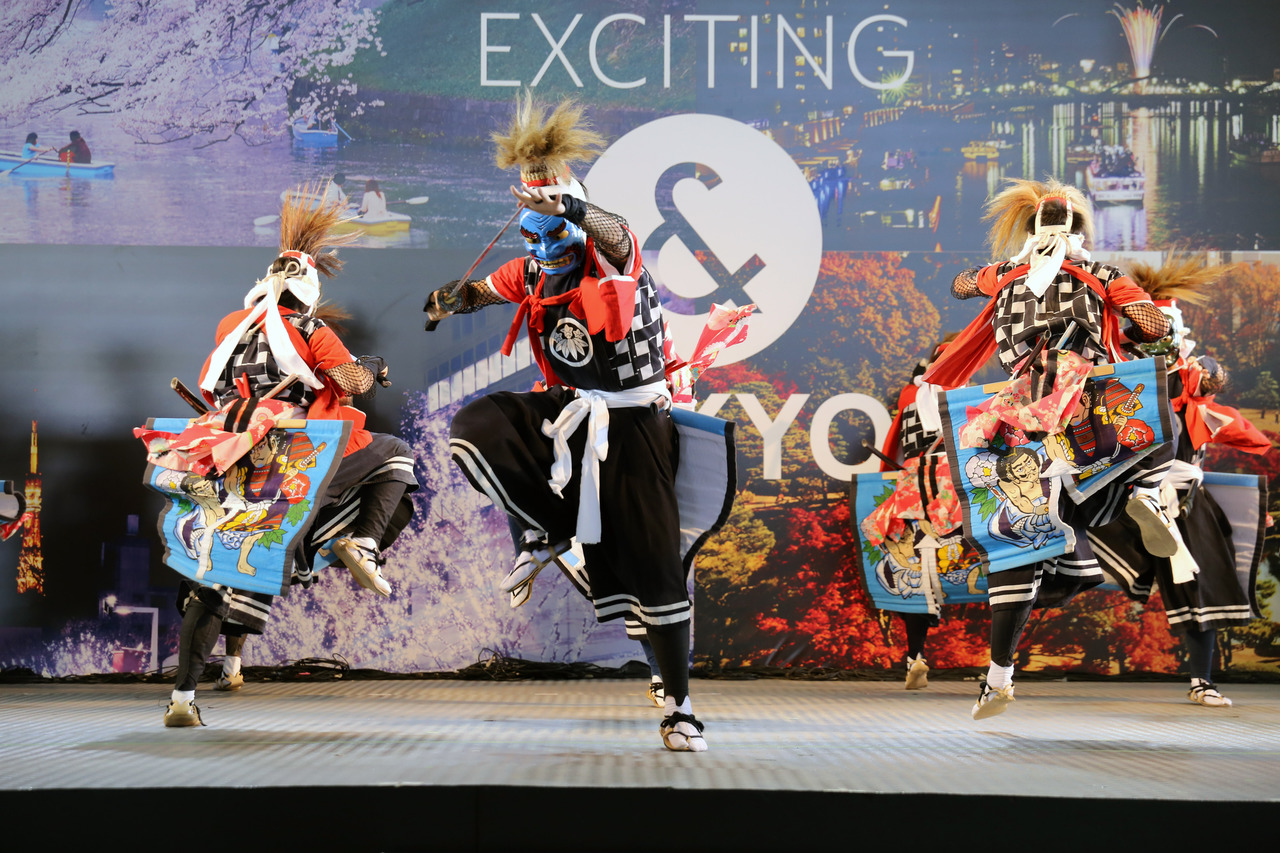
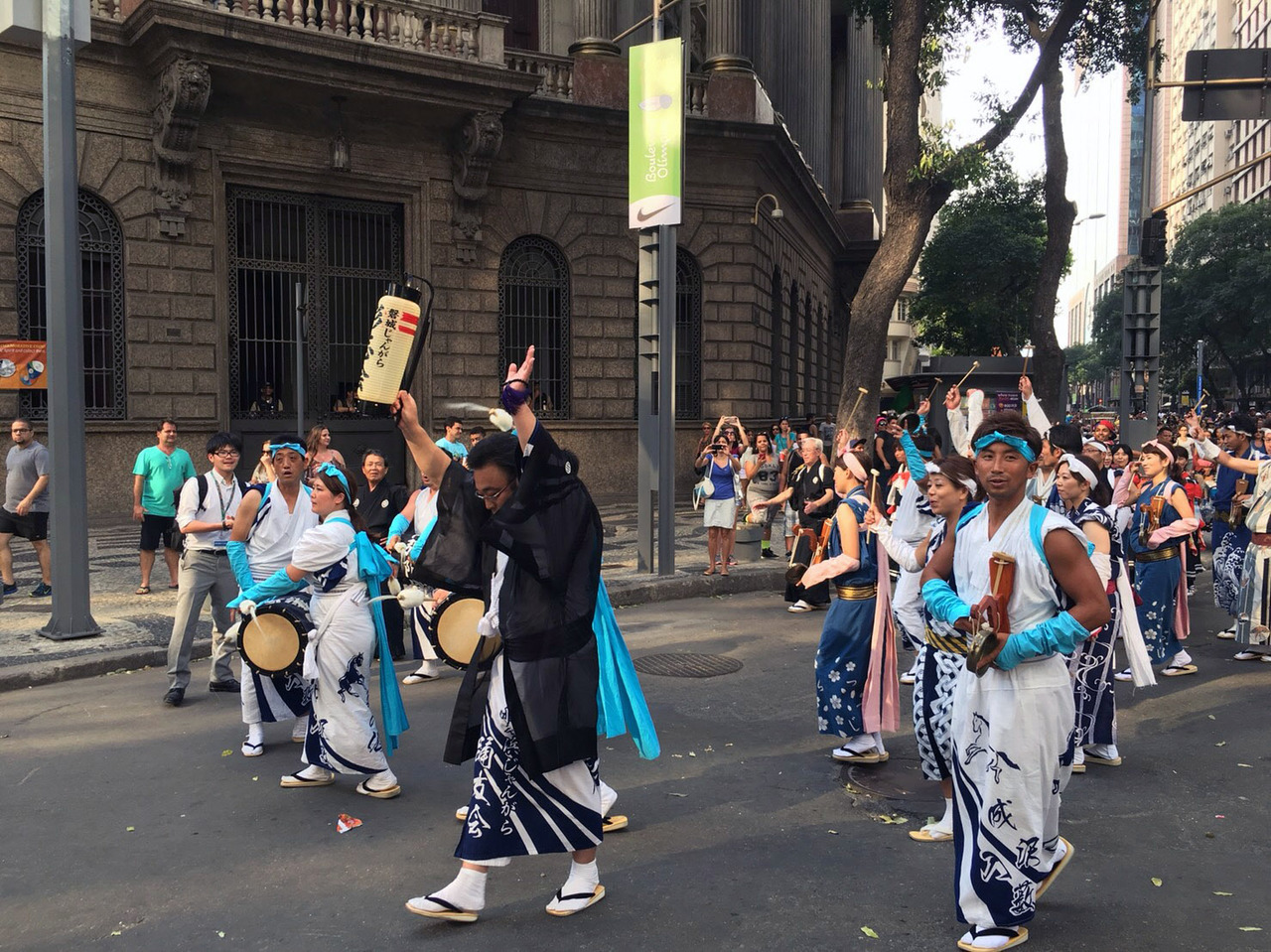
Provided by JFPAA
In addition, "Tokyo Caravan" directed by Hideki Noda is also a leading project, but the performances, arts, music and techniques used were developed and expanded to interconnect with the folk performing arts of Iwate, Miyagi and Fukushima. During the period of Rio we held a workshop at the site which we performed at the "Roppongi Art Night" in October last year after including Rio culture in it as well. It can be said that the efforts made by "directors" to interwork folk performing arts with various kinds of culture, overcoming such boundaries as countries, languages and expression, is something that is unique to the Olympic program with its character as a human festival.
And I would like to introduce one more magnificent project that connects the Great East Japan Earthquake with the Olympics and with Asia.
The Sanriku International Arts Festival (hereinafter, "Sanfes") has been held every year since 2014 by the NPO Japan Contemporary Dance Network (Kyoto, hereinafter, JCDN) and cosponsored by JFPAA. It connects the various areas on the Sanriku coast that were affected by the Great East Japan Earthquake and includes a rich variety of folk performing arts and local culture rooted in the area that were not lost in the earthquake disaster, performances of Asian folk performing arts and ethnic folk performing arts from areas in Asia that are connected to Sanriku by the sea and the contemporary dancers that link folk performing arts with physical expression and come to the Tohoku area to learn the folk performing arts in the "We're Gonna Go Learn in Tohoku!!" and other projects in which dancers and artists from other places get together with local residents to create art and performances.
As a folk performing arts coordinator from the first year of the festival, I have been involved in the selection of performing arts most appropriate to the theme each time, but for me the Sanfes is always an event that gives me great stimulation and new ideas. I mentioned earlier that the staging of folk performing arts has become standardized since the Japan World Exposition but I think that the performances on that stage every year have become a valuable opportunity for the local folk performing arts to give performances outside their area, for recordings to be made, for knowledge and learning to be acquired and for the aim of "the preservation and protection of the valuable cultural assets of the performing arts". Although this viewpoint may be somehow falling into the idea of "taking over things that have been conveyed since past times without changing them", folk performing arts have been from the beginning a way for the local residents to incorporate the form and expression of various prayers and wishes "to be able to carry on living" in each era while at the same time sometimes changing things or benefitting from change, so the performing arts have been updated yet continue to be connected to the past. If this is so, it can be said that the folk performing arts are "living" and "lively" and have the power "to make people lively". Although I have mentioned this before, by continuing to hold festivals and performing arts as usual each year in the Great East Japan Earthquake disaster area, places where everyone can share their joy and sadness were created from which many examples of the emergence of a basis for thinking about the reconstruction and future of the region could be seen. Sanfes not only regards the performing arts from the perspective of "cultural assets" that protect important wisdom from the past, but also interprets them in the category of "cultural art", as the foundation on which to build the present and the future. This may be the reason why they went as far calling the festival "an arts festival" and not "a performing arts festival".
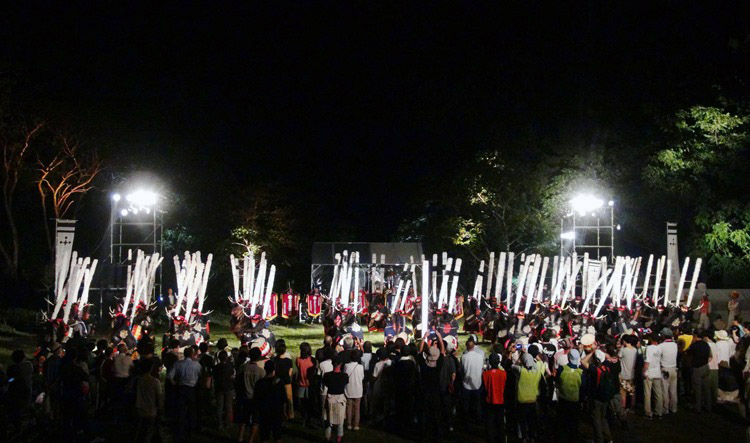
Provided by JFPPA
Norikazu Sato who is the producer of Sanfes and representative of JCDN, the main sponsor of Sanfes, says that he wants Sanfes to be the "Opening Ceremony for the Tokyo Cultural Olympiad". Of course, by holding Sanfes in this way will give the reconstruction of the disaster-stricken area global coverage and result in economic benefits. Furthermore, by creating models in Sanriku that connect folk performing arts, cultural arts, local residents and various other people, it should be possible to demonstrate a model case for the large number of folk performing arts that are being performed throughout Japan and for the local communities. However, it will become necessary to allow for long-term adjustments while working on how to gain the cooperation of the local residents and the performers of folk performing arts. They perceive Sanfes as "their own thing" and have continued to use the folk performing arts as a way of imagining a bright and peaceful future for their local area and for their descendants; it would not be strange to say that this situation has arisen from the very origins of the folk performing arts. The biggest challenge for the Sanriku International Arts Festival for the future is how many residents they can get involved and whether they can get them actively engaged.
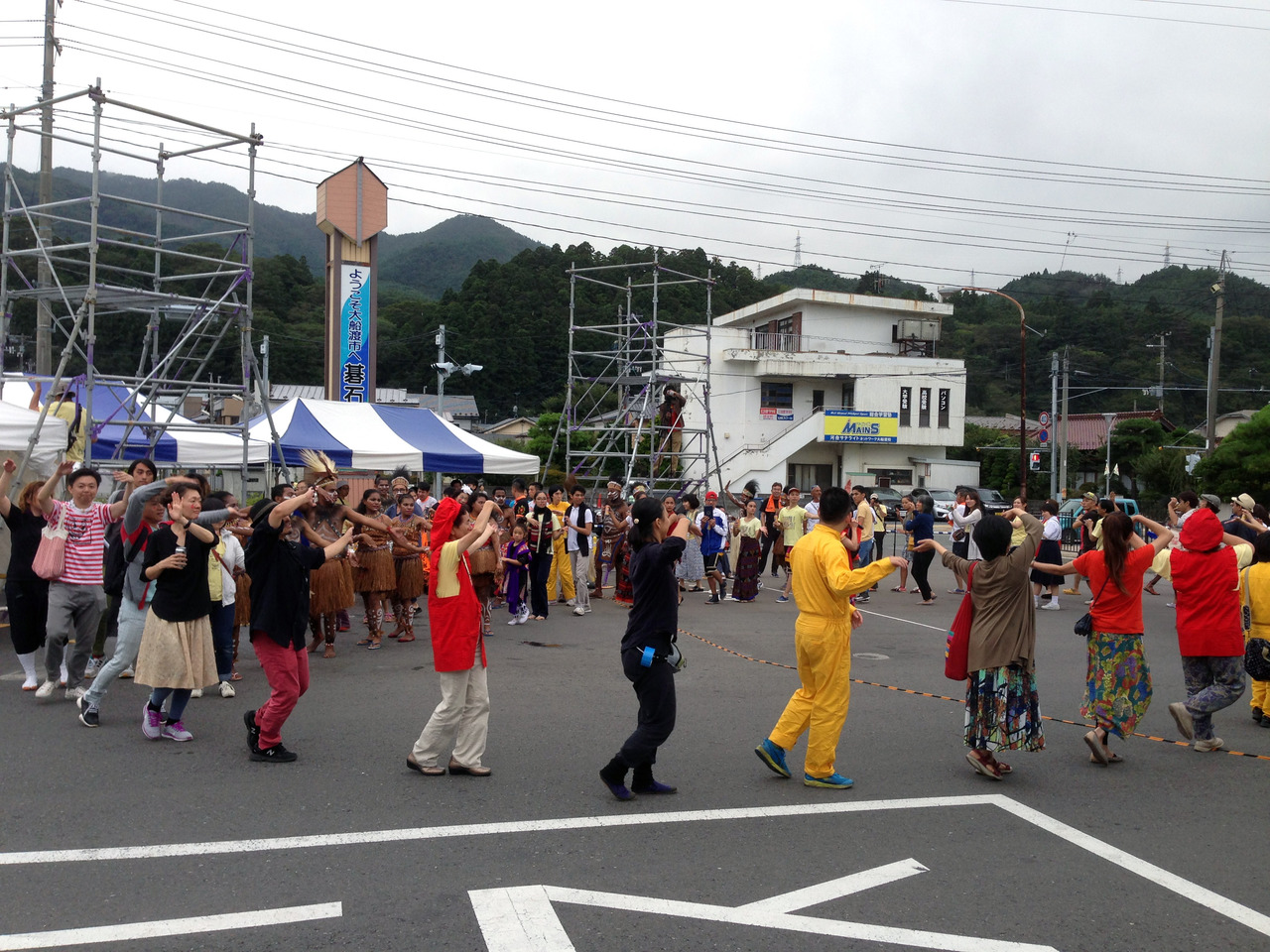
Provided by JFPAA
The future of Japan imagined from the perspective of the folk performing arts
The JFPAA has continued to work consistently with folk performing arts throughout the high economic growth period after the end of World War II, the collapse of the bubble economy and the Great East Japan Earthquake. Through being able to continue to see the sight of folk performing arts in a Japan that has now become materially rich, or through performances or the involvement of outside parties in public performances outside the local region, it may be said that one direction for folk performing arts has already been decided. On the other hand, new value has been brought to things that were restricted to a limited area before, through exchanges with parties outside the area and there are many performing arts that have thrived through conveying their traditions. It could be said that JFPAA is an organization with many merits and demerits. However, the disaster that was caused by the Great East Japan Earthquake reconfirmed the threat and great power of nature that have been expressed and nurtured in the folk performing arts, posing questions such as "What are folk performing arts?" and "What is the role of the JFPAA?" that have given us the opportunity to think about things anew.
For the JFPAA, if the richly endowed folk performing arts from each area are going to be caught up in the rough waves from the 2020 Tokyo Olympic Games and Paralympic Games, we will have to reassess the values that the JFPAA has had until now and must make a shift in the organization to make it one based on the new sense of values gained from the earthquake disaster. As a nationwide organization, from the viewpoints of improving the value of Japanese culture through the folk performing arts from Japan and the challenges that developed countries that have reached the end in rapid economic growth face from now on, this should be an opportunity for us to show the world ahead of time, a model centered around reconstruction by the folk performing arts since the Great East Japan Earthquake.
Corresponding to the thoughts of the former performers and pioneers in folk performing arts in the past, "Folk Performing Arts" give people the ability to imagine a future of endless peace for their descendants living in the area. What will the areas that convey the folk performing arts leave behind through the opportunity of 2020? Who will remain and carry on conveying the performing arts? What decisions will be made? I would like to welcome the participation and cooperation of even more people in the handing down of the traditions in folk performing arts, as an occupation, and as the generation who will inherit the future of Japan from now on.
(January 12, 2017)


